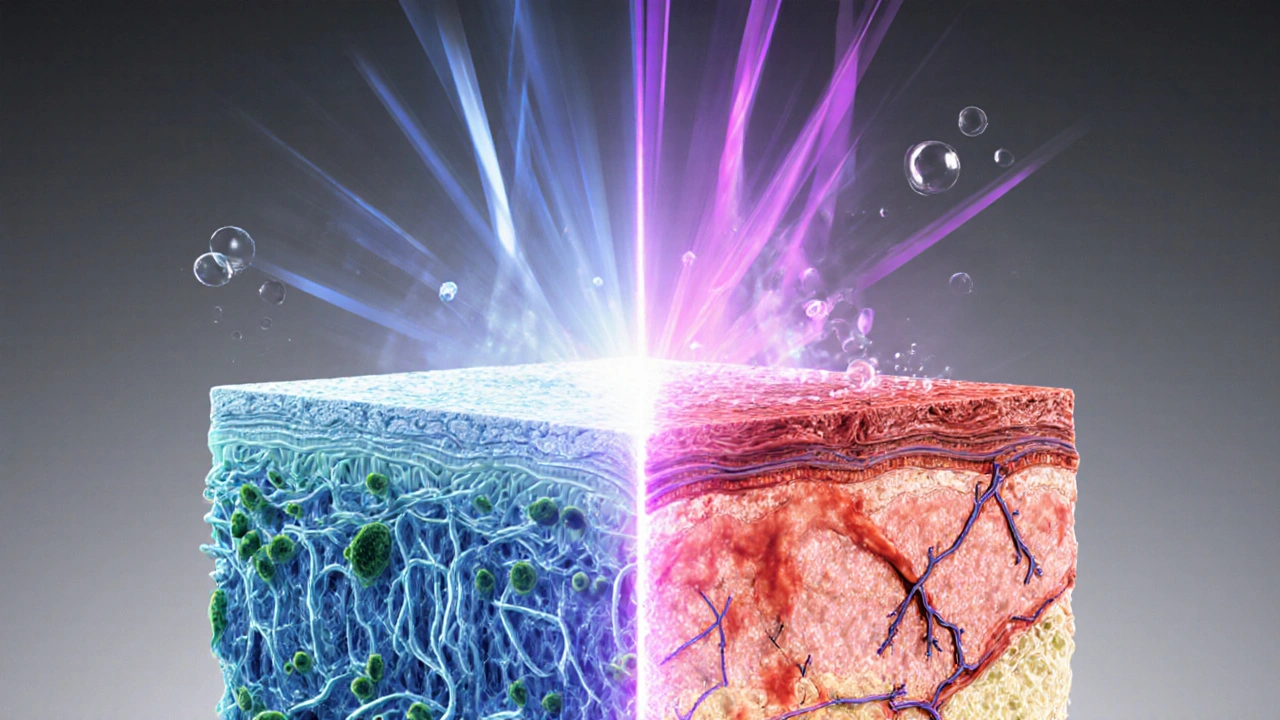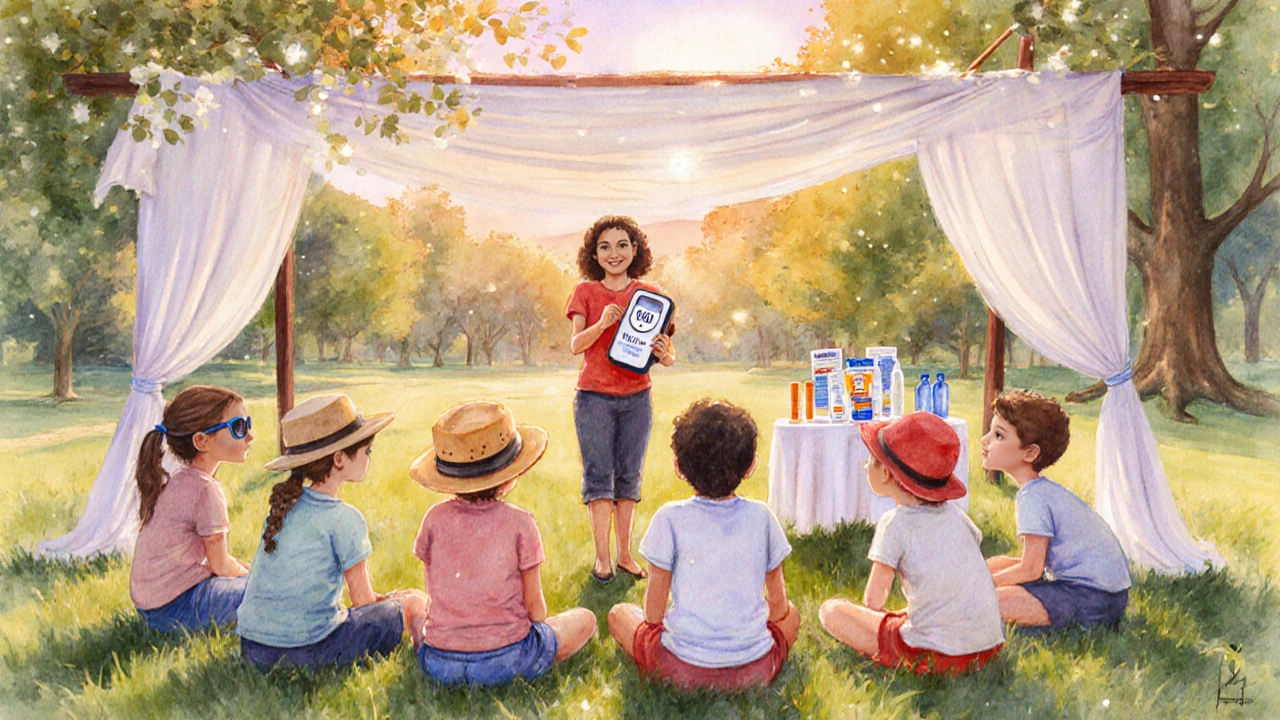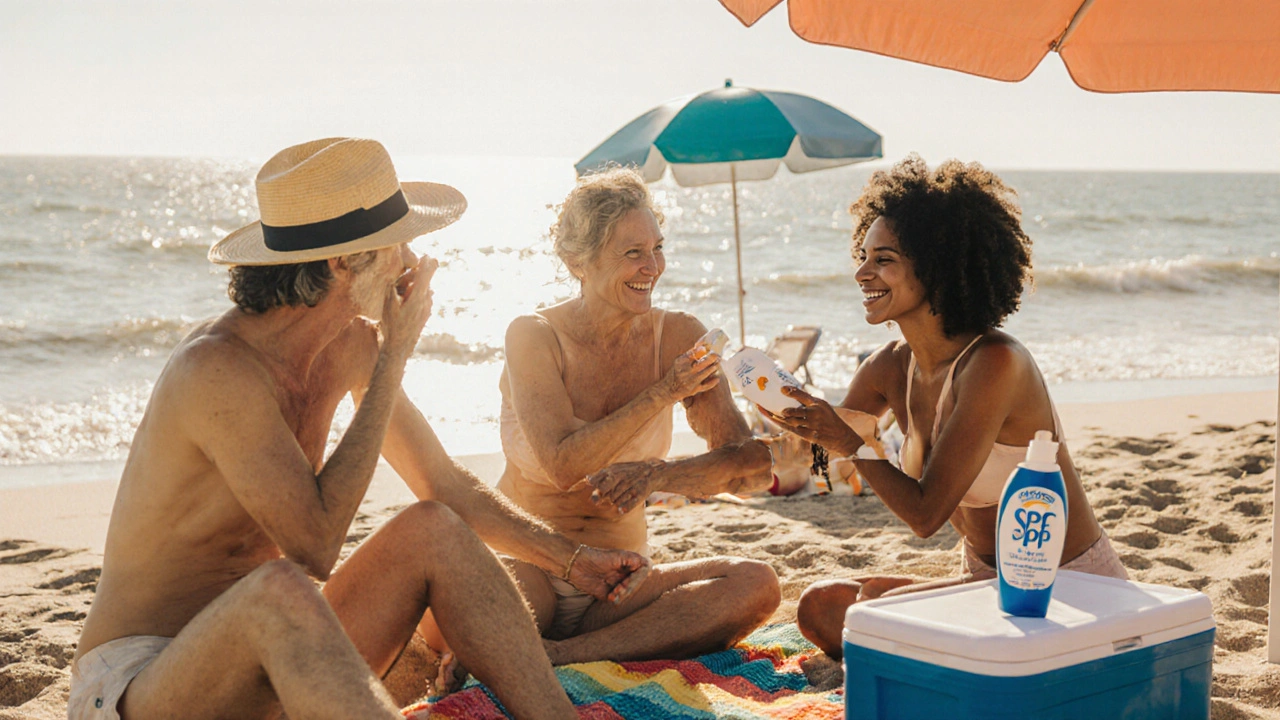Sunburn Risk Calculator
Your Sunburn Risk Level
-
Recommended Protection:
Every summer, beaches and parks fill with people soaking up the sun, yet many forget that a painful burn isn’t just a temporary inconvenience-it’s a warning sign that can lead to serious health problems. Sunburn education teaches us how to read the sun’s signals, protect our skin, and spread that knowledge to others, ultimately lowering the risk of skin cancer and premature aging.
Key Takeaways
- UV radiation causes DNA damage that can turn into skin cancer.
- Even mild sunburns add up over a lifetime.
- Education programs in schools and workplaces cut burn rates by up to 30%.
- Practical sun‑safety habits are easy to adopt and share.
- Reliable resources exist for creating effective awareness campaigns.
Understanding UV Radiation and Sunburn
When sunlight reaches Earth, it carries three types of ultraviolet (UV) rays: UVA, UVB, and UVC. UV Radiation is a form of electromagnetic energy that penetrates the skin, causing molecular damage that manifests as sunburn, premature aging, and DNA mutations. UVA accounts for about 95% of the UV that reaches the surface and penetrates deep into the dermis, contributing to long‑term aging. UVB, though less prevalent, carries more energy per photon and is the primary cause of sunburn.Sunburn occurs when the skin’s protective melanin is overwhelmed, leading to inflammation, redness, and sometimes blistering. The body’s immediate response is to increase blood flow to the damaged area, which is why a burn feels hot and looks red.
Health Risks: From a Red Face to Skin Cancer
Short‑term effects of sunburn are obvious-pain, peeling, and a temporary loss of skin barrier function. Long‑term consequences are far more insidious. Repeated UV exposure can mutate the DNA in skin cells, paving the way for skin cancers such as basal cell carcinoma, squamous cell carcinoma, and the deadliest form, melanoma.
Melanoma is an aggressive skin cancer that originates in melanocytes, the cells that produce pigment, and is strongly linked to history of severe sunburns. According to the World Health Organization, more than 3 million non‑melanoma skin cancers are diagnosed each year in the United States alone, and the incidence of melanoma has risen by 50% in the past three decades. A single blistering sunburn before age 20 can double a person’s risk of melanoma later in life.
Why Education & Awareness Save Lives
Knowledge is the first line of defense. When people understand how UV causes damage, they’re more likely to adopt protective habits. Studies from the Australian SunSmart program show that comprehensive school curricula reduced sunburn incidence among teenagers by 27% after just one year.
Beyond individual behavior, community‑wide campaigns shift cultural norms-making wide‑brimmed hats, shade structures, and sunscreen application socially expected rather than optional.

How to Teach Sun Safety: Practical Steps for Schools, Workplaces, and Communities
- Integrate science lessons. Explain the physics of UV radiation and its health impact using simple visuals.
- Use real‑world examples. Show before‑and‑after photos of skin damage or share stories from local dermatologists.
- Provide hands‑on activities. Let students test UV index levels with cheap UV meters or mobile apps.
- Model behavior. Staff should wear hats and apply sunscreen during outdoor events.
- Offer resources. Distribute brochures that list SPF‑rated products, shade options, and safe exposure times.
For workplaces with outdoor staff-construction, landscaping, sports-mandatory sun‑safety briefings and provision of sunscreen can cut occupational sunburns dramatically.
Everyday Sun‑Safety Tips for Individuals
- Check the UV Index-a value of 3 or higher calls for protection.
- Apply broad‑spectrum sunscreen (SPF30or higher) 15 minutes before exposure; reapply every two hours.
- Wear UV‑protective clothing: long sleeves, UPF‑rated shirts, sunglasses with 99‑% UV blockage.
- Seek shade between 10a.m. and 4p.m., when UV intensity peaks.
- Never use tanning beds-UVA exposure there is even more intense than midday sun.
Sunscreen is a topical product that absorbs, reflects, or scatters UV radiation to protect skin cells from DNA damage. Choose a water‑resistant formula if you’ll be swimming or sweating, and store it in a cool place to preserve effectiveness.
Myths and Misconceptions
Myth: “If I’m not burning, I’m fine.” Reality: Even without visible redness, UV rays cause invisible cellular damage. Myth: “Tanning gives me Vitamin D, so I don’t need supplement.” Reality: Sun‑derived Vitamin D can be obtained safely with short exposures or fortified foods; a 10‑minute midday walk is enough for most adults, and excessive sun still raises skin‑cancer risk.
Vitamin D is a fat‑soluble vitamin essential for bone health, which the body synthesizes when skin is exposed to UVB rays. Balancing vitamin D needs with sun protection is best achieved through diet and supplements rather than prolonged sun exposure.
Comparison of Sunburn Severity and Recommended Actions
| Severity | Symptoms | Immediate Action | Follow‑up Care |
|---|---|---|---|
| 1️⃣ Mild (Redness only) | Pink skin, no pain | Cool shower, moisturize | Apply SPF daily for 24hrs |
| 2️⃣ Moderate (Red, tender) | Warm, stinging, possible swelling | Cool compresses, aloe gel | Hydrate, avoid sun for 48hrs |
| 3️⃣ Severe (Blistering) | Blisters, intense pain | Do not pop blisters, seek medical advice | Prescription ointments, monitor for infection |
| ⚠️ Very Severe (Fever, chills) | Systemic symptoms, large skin areas affected | Visit emergency department | Professional wound care, possible hospitalization |
Resources & Next Steps
Start a sun‑safety program today by using these free tools:
- National Cancer Institute’s Sun Safety Fact Sheet (PDF)
- World Health Organization’s UV Index Tracker app
- Local health department’s community‑outreach kit
For educators, the Sun Safety Education program provides lesson plans aligned with national science standards. For businesses, consider partnering with dermatologists to host “Skin Health Days” and distribute sunscreen samples.

Frequently Asked Questions
How soon after sun exposure can I see a sunburn?
Mild redness can appear within 2‑4hours, while full‑blistering may take up to 24hours.
Is SPF 30 enough for all skin types?
SPF30 blocks about 97% of UVB rays and is suitable for most people, but very fair or high‑risk individuals may prefer SPF50 for extra margin.
Can I use sunscreen on children under 6 months?
For infants younger than 6 months, the safest option is to keep them in shade and dress them in protective clothing; sunscreen is generally not recommended.
Do cloudy days still require sunscreen?
Yes. Up to 80% of UV rays penetrate clouds, so protection is still needed on overcast days.
What is the difference between UVA and UVB protection?
UVA penetrates deeper and contributes to aging; UVB causes sunburn. Broad‑spectrum sunscreen guards against both.

Sun protection starts with picking a broad‑spectrum SPF 30 or higher and reapplying every two hours. Even on cloudy days the UV rays can still damage your skin.